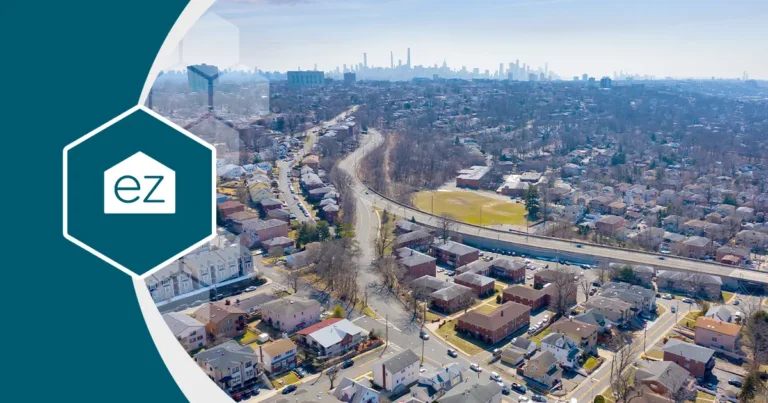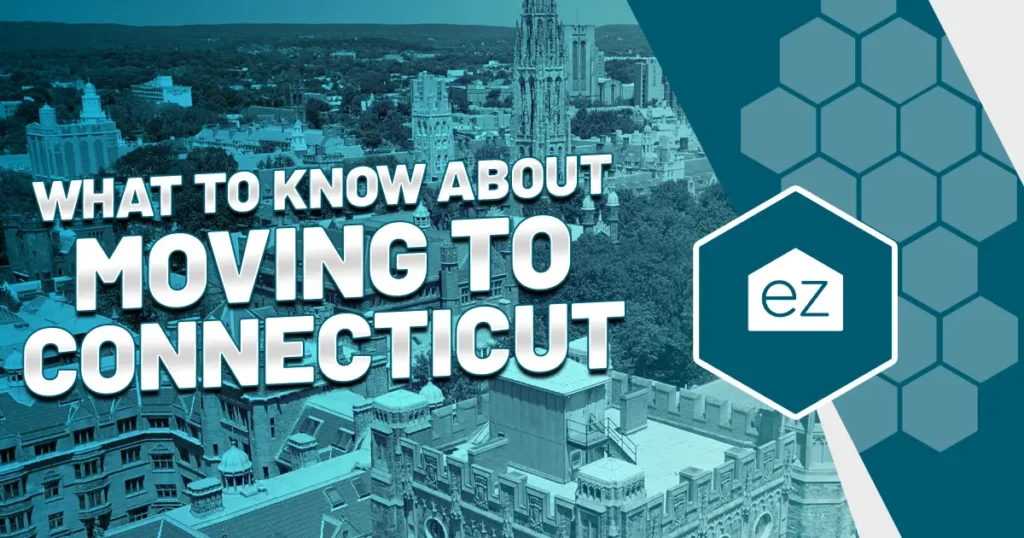The Ultimate Moving Guide to New Jersey
Describe a nourishing lifestyle. Chances are, it will include access to fresh, farm-to-table food, fun weekends doing things like playing at the beach, and friendly neighborhoods where even the store employees greet you by name. Would you be shocked to learn you can have this in New Jersey? It’s true! People moving to New Jersey are often surprised by what they find in “New York City’s suburbs.”
But this is the Garden State, not a concrete jungle. Sure, it falls between two major cities, but what the state lacks in size, it makes up for with massive character, culture, and community. So, get to know what to expect from relocating to New Jersey, from navigating jug handles to its price tag.
A Brief History of New Jersey
Long before it became the butt of jokes for New Yorkers, New Jersey was a strategically crucial American colony. The colonial tug-of-war laid the groundwork for today’s melting pot of cultures. Native American tribes called it home for thousands of years before the waves of Swedish, Dutch, and English.
It officially became a British colony before landing in the crosshairs of the American Revolution. Over 100 battles earned New Jersey the nickname “The Crossroads of the Revolution” as the British and the emerging American forces fought to control access to New York and Philadelphia. Once all the gunpowder cleared, New Jersey adopted its state constitution in 1776 and was the third state to ratify the United States Constitution in 1787.
Significant industrial growth throughout the 19th and 20th centuries made New Jersey a manufacturing hub. Cities such as Newark and Trenton flourished, and their factories attracted diverse immigrants seeking work, adding to New Jersey’s melting pot. This era reinforced New Jersey’s identity as a land of inventors and innovations. It’s where Thomas Edison established his famous invention factory in Menlo Park and West Orange.
These historical events, among many others, shaped New Jersey into a dynamic state.
New Jersey’s Many Regions
New Jersey may be the fifth-smallest state by land size, but it’s incredibly diverse, not just in its 9.3 million residents. Locals break the state into geographic and distinct cultural regions to make sense of it. So when someone says, “Where in Jersey?” here’s an answer:
The Shore

Made famous by an MTV show, the Jersey Shore isn’t all spray tans and drama. Jersey residents all have their favorite slice of “The Shore,” with many having nostalgic memories of summer days chilling by the waves or thrilling at the boardwalk attractions. Cities here run the whole gamut, with calm, family-friendly beaches, packed urban beachfront, and bustling surf spots.
Central Jersey
No region epitomizes the “Garden State” moniker as well as Central Jersey, where roadside stands sell the best of the season. The state’s heart is a patchwork of suburban communities, historical sites, and long-running homesteads. The location balances suburban living and easy access to major cities.
South Jersey
Close-knit communities, sprawling pine forests, and a slower pace of life define this region. Find beaches lined by Gilded Age mansions, historic sites around the Delaware River, and prime access to Philadelphia across the river.
Atlantic
Welcome to the Atlantic City region. This famous hub of entertainment, gaming, and nightlife by the ocean is a contrasting landscape of nature’s splendor and manufactured marvels. It’s a hub for play and living an exciting life near the sea.
Skylands

Named thus by the state’s tourism department, the rolling hills and serene lakes in northern Jersey contrast the urban jungle of eastern Jersey. The Appalachian Trail winds through the surprisingly remote state highlands. The Skylands parks are a haven for camping and fishing in the summer and skiing and ice-fishing in the winter.
Northeast Jersey
Alternatively known as the Gateway region, this is New Jersey’s most densely populated area. It includes the counties facing New York City. It has a highly built-out infrastructure and easier access to public transportation.
New Jersey Cost of Living
Moving to New Jersey calls for some sound financial planning. Keep in mind that salaries may be adjusted to match the higher expenses. The cost of living index sits at 120, with housing, groceries, and transportation costs all surpassing the national average.
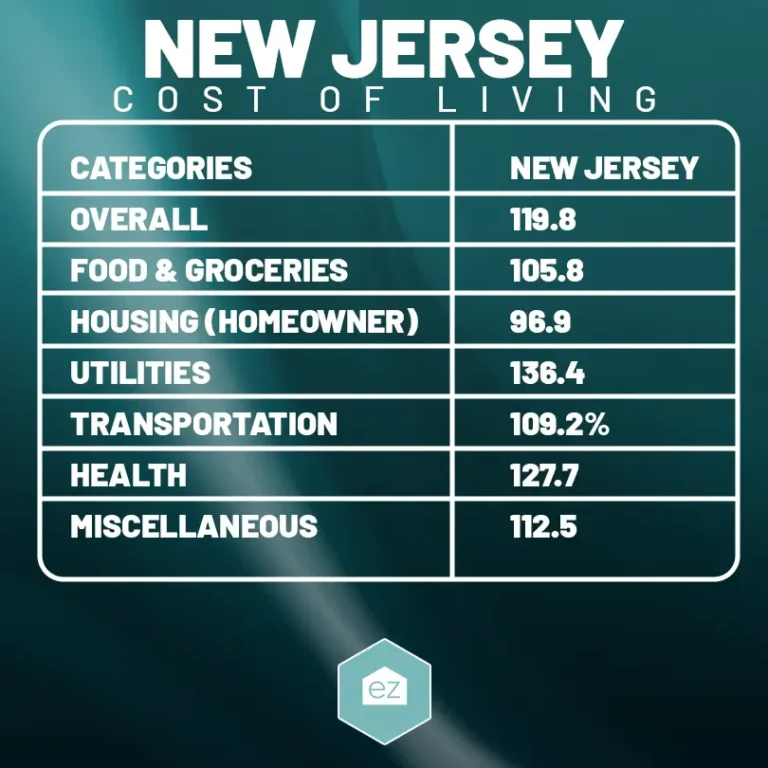
What will you need to make to afford New Jersey? MIT’s cost of living calculator estimates that a family of four with two working adults and two children would need to bring home $125,609 a year before taxes.
Of course, the cost of living varies across the state. Pennsauken Township, Gloucester Township, and Winslow rank among the three most affordable cities in New Jersey. Beach Haven, Rumson, and Alpine are among the most expensive as of 2023.
Open Your Wallet For Taxes
Understanding New Jersey’s tax structure is critical since it impacts your income and expenditures. Unfortunately, the state ranks among the worst for tax burdens.
First, your individual state income taxes are calculated based on your earnings. What you’ll owe will fall somewhere from 1.4-10.75%. Looking at Newark? It collects a 1% income tax.
Social Security isn’t taxed, but retirement withdrawals can be. That includes pensions and annuity income.
State sales taxes run 6.625%, while a local city or township can add a maximum of 3.313%. However, the state also has a tax relief program where economically distressed cities pay a lower sales tax rate. The average statewide is a combined 6.66% for sales taxes as of 2024.
Property taxes are the highest nationwide based on the average effective tax rate. Learn more about the New Jersey property tax system and where to find local rate information.
Transportation Has Its Quirks
With one of the longest average commutes in the nation, New Jersey residents are “mega-commuters.” About one out of every ten commuters heads into New York City from northern New Jersey, which may account for the state’s poor travel times.
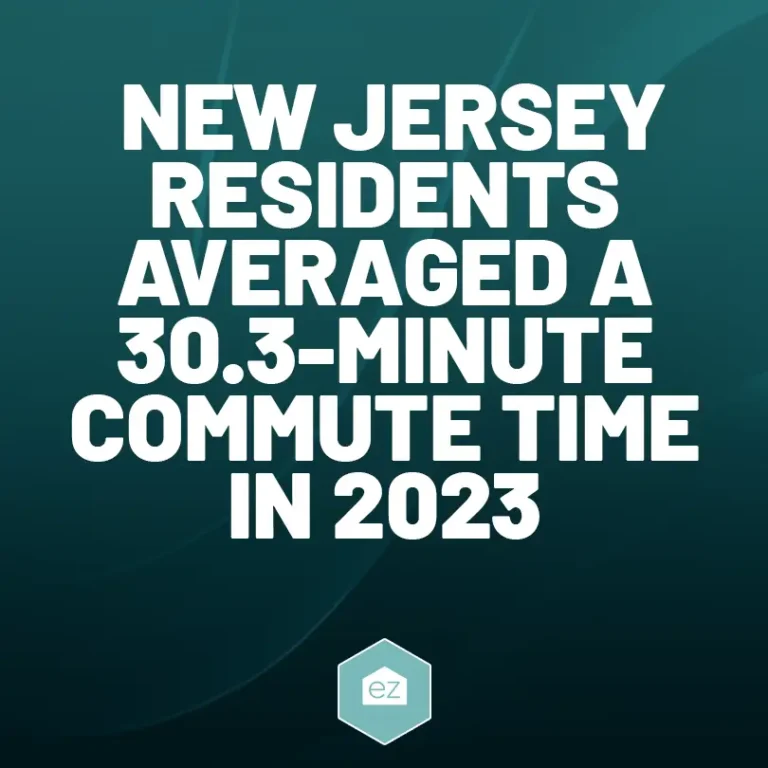
One quirk of driving in New Jersey is the “jug handles,” better known as the “Jersey left.” For those moving from out of state, it takes some getting used to exiting right to make a left-hand turn. That’s a quirk of living in the Garden State! And another? New Jersey is the only state where pumping your gas is still illegal. Attendants do the fill ups for you, and they’ll expect tips.
Some regions have extensive public transportation. NJ Transit is the nation’s third-largest public transportation provider. It connects major New Jersey cities to New York City and Philadelphia through bus, rail, and light rail service. Rail lines run down the North Jersey coast to Atlantic City, Trenton, and into the Pascack Valley.
New Jersey also has Amtrak routes, Greyhound, and two in-state international airports for further travel. The Port of New York and New Jersey is the East Coast’s largest operating port, ensuring a consistent flow of people and goods.
New Jersey Wins For Its School System

When it comes to educational quality, you can’t beat New Jersey. US News and World Report ranked it second overall in the nation for 2023. New Jersey sets the model for public and private K-12 schools and has distinguished higher education institutions.
Both US News and Education Week rank its PreK-12 system as the best in the nation. New Jersey earned top five marks in high school graduation rates, reading scores, college preparedness, and preschool enrollment. Eight high schools ranked in the nation’s top 100, with the highest listing at no. 26. These schools included focused studies in biotech research, STEM learning, and college prep.
It’s noteworthy that New Jersey has one of the nation’s highest spending rates per student–$16,543 per student as of 2023. The Education Week analysis shows the system is one of the better in the United States at distributing funding across wealthy and poorer districts.
For higher education, New Jersey’s 34 four-year colleges and 18 community colleges scored in the middle of the rankings. However, that doesn’t mean the college and university system here is average. The state includes historic Ivy League institutions, like Princeton University, the nation’s best college in 2023 by US News and World Report. This private school has long been among the nation’s best, with top engineering, applied science, and public and international affairs programs.
Rutgers University, particularly the New Brunswick campus, ranked no. 40. Interestingly, the college awards the highest number of doctorate degrees each year. Its specialty programs, like its Center for Advanced Transportation and Infrastructure and its Agricultural Experiment Station, help make Rutgers unique among national colleges.
Other top-achieving New Jersey universities ranking in the nation’s top 100 include the Stevens Institute for Technology, New Jersey Institute for Technology, Seton Hall, and Stockton. Those seeking additional education will find New Jersey’s higher education landscape a healthy mix of private and public two-, four-, and graduate-level schools.
Extensive Healthcare Access
Medical care is close to home in New Jersey, with 75 hospitals statewide and a growing contingent of urgent care centers. It’s not just quantity but high-quality health care. A collection of top-rated hospitals and healthcare facilities push the state into the top 10 in the nation for overall medical care ratings. Its public health program was the nation’s third best, and New Jersey had a high mark for healthcare accessibility.
Hackensack University Medical Center leads the state in quality medical care. The training facility has earned national ratings in six adult and four children’s specialties. Following Hackensack is Morristown Medical Center, which also has earned national rankings in six medical care specialties.
Highly Diversified Job Market
Despite a challenging job market with an unemployment rate tracking higher than the national average, career opportunities abound. New Jersey leads in private-sector industries like pharmaceuticals, finance, and technology. Regarding life sciences, the state has one of the highest concentrations of scientists and engineers, ranking fifth nationally. Paired with that is a high concentration of companies working in pharmaceuticals.
Outside the sciences, New Jersey’s economy has a high concentration of work in the finance and IT sectors. These careers are more prevalent closer to New York City.
The state’s location is also vital for the logistics and manufacturing sectors. Over 900,000 people work in transportation alone, helping move goods around the greater Jersey and New York region. Careers in this sector dominate the north-central Jersey counties, particularly as the food manufacturing sub-sector has grown to support the local population.
A Competitive Housing Market
The real estate scene in New Jersey can be intense and pricey. Consider that it has counties beside two major metropolitan areas (New York City and Philadelphia) plus a top vacation shoreline for the American northeast (the Jersey Shore and Atlantic City). That instantly places New Jersey real estate in high demand.
Here are the January 2024 figures to give you a snapshot of what to expect when moving to New Jersey.
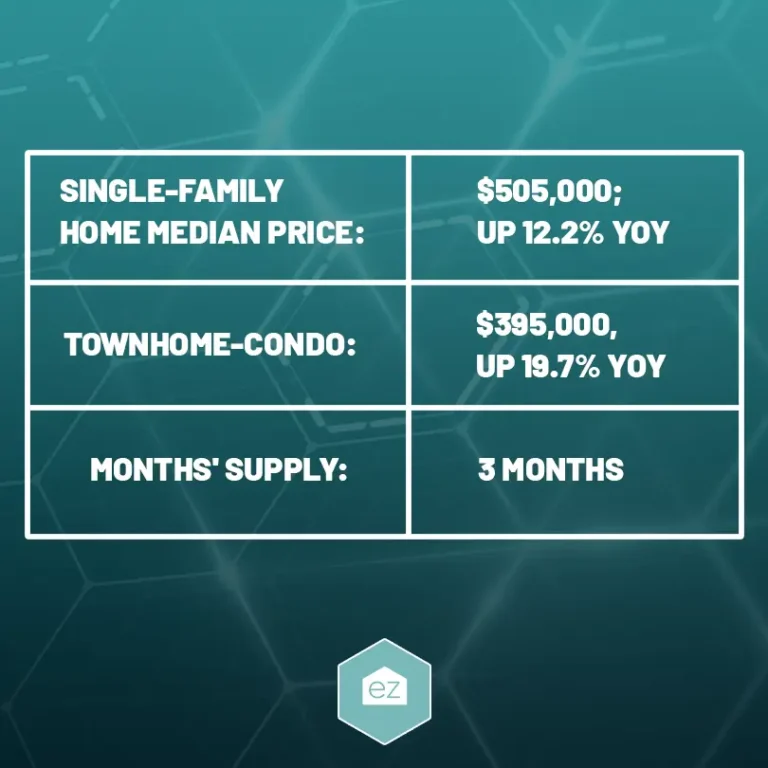
Top New Jersey Attractions
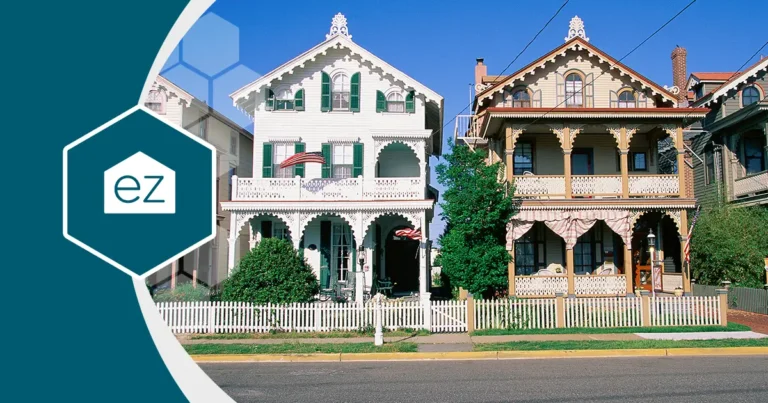
Every state has some cultural attraction that you must do at least once to feel like you’re a part of that state. Once you live in New Jersey, put these things to do on the bucket list.
- Atlantic City: A glittering empire of fun, games, and sandy shores. Even if you’re not a gambler, it’s worth visiting for the boardwalk, music scene, and beaches.
- Liberty State Park: Bask in unmatched views of the Statue of Liberty and NYC skyline.
- Cape May: Where Victorian architecture meets beautiful beaches, residents love this quiet seaside resort, which is an antithesis to the Jersey Shore’s reputation.
- Delaware Water Gap: A paradise for hikers, campers, and nature lovers, you won’t believe New York City is 90 minutes away.
- Battleship New Jersey: America’s most decorated battleship-turned-museum is a must-visit attraction in Camden.
- Grounds For Sculpture: A whimsical garden where art and nature dance together consistently makes lists for a place to visit and explore.
Local New Jersey Culture Quirks
The Garden State’s produce bounty is best enjoyed at local farmers’ markets but can also be found at the roadside stands. In-season, you can head to an orchard to farm to pick your own tomatoes, apples, or pumpkins. The state is among the top cranberries, eggplants, and tomatoes producers.
In Jersey, your late-night cravings are satiated with dependable diner delights. The state has over 500 of these 24/7 quick-service joints. You may notice many have Greek food, as immigrants took over and opened new diners in the 40s and 50s.
Your preference between Wawa and QuickChek can be a social identity. Jerseyians debate which station is better. The Taylor ham or pork roll is equally debatable–which should it be called?
The Pine Barrens in South Jersey remain a popular place to camp despite the legend of the Jersey Devil. The folklore behind the beast inspired the state hockey team’s name, the Jersey Devils.
Ready for Move-In to New Jersey
Once you’ve mastered the rhythms of New Jersey and cracked the code on living costs, you’ll be on your way to living your best life in Jersey. Explore the many regions and towns that make up the Garden State to find the right one to buy a home.
